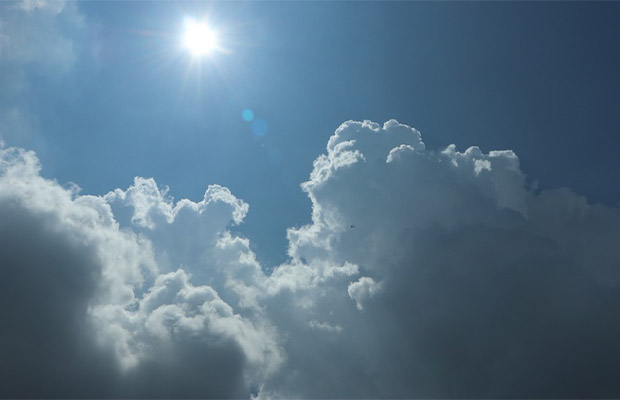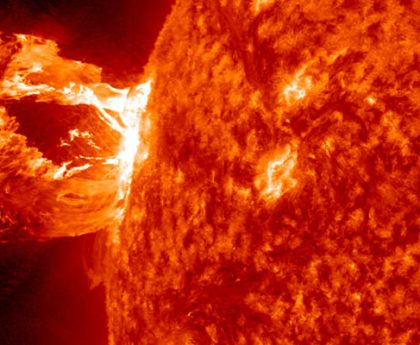The Sun’s daily culmination, also known as Solar Noon, or its maximum height above the horizon, rarely exactly coincides with the noon indicated on our clocks and watches due to the Earth’s inclination with respect to the main plane of the Solar System and the slight ellipticity of the Earth’s orbit.
What is solar noon? Solar noon occurs when the Sun crosses a location’s meridian and is at its zenith in the sky. The majority of the time, it doesn’t occur at twelve o’clock.
Continue reading and find more information about solar noon.
Table of Contents
Meridians And The Sun
An imaginary line tracing the globe’s surface from the North to the South Pole is known as a meridian. It links all places that are precisely north or south of one another and have the same longitude. Your local meridian is the path that passes through your location and connects two poles.
When your local meridian is on the side of the planet that faces the Sun due to the rotation of the Earth, that is when solar noon occurs. The Sun is now at the top of the arch in the sky that it has been tracing since sunrise from your point of view. Depending on your latitude and the season, it may appear to be directly overhead, directly north, or directly south at this moment.
Solar noon is the same time everywhere that shares your local meridian because solar time is dependent on longitude.
Where Did The Word “Noon” Originate?
Its origin lies in the Latin word none, referring to the 9th hour after daybreak. Its original meaning was to indicate that a daily prayer or meal should be taken at 15:00 (3:00 pm), which is nine hours after 06:00 (6:00 am). In the 12th century, the prayer and meal were shifted to 12:00 (12:00 pm), while the term none remained the same, inspiring the use and timing of today’s noon.
When Is Solar Noon?
Solar noon does not occur at 12 o’clock in the majority of Earth’s locations. The solar noon meridian slowly moves from east to west due to the Earth’s rotation. In other words, solar noon occurs slightly earlier in areas directly east of you and slightly later in areas directly west of you.
Sun where are you now?
Civil time abruptly shifts as you move from one time zone to another because our clocks are set according to time zones, typically in 1-hour increments. While this unquestionably makes life easier for us, it does not correspond to the Earth’s rotation’s even motion or the local solar time’s gradual geographic progression.
As a result, clocks in each time zone’s eastern portion display a later time at solar noon than clocks close to its western boundary. Solar noon would occur at 11:30 (11:30 am) at the eastern time zone border and at 12:30 (12:30 pm) at the western time zone border even if time zones were used as they were once intended—where the local time is based on the solar time in the zone’s center, with the time zone extending 7.5 degrees of longitude to the west and to the east of the center line.

Latest Solar Noon In China
Because time zones don’t always adhere to this ideal, the difference is even greater in reality. Political or geographical factors frequently cause significant distortions to their borders. Consider China, which spans more than 60 degrees of longitude but only has a one-time zone. This means that during some seasons of the year, solar noon in western regions occurs later than 15:00 (3:00 pm), which is later than anywhere else on Earth.
Daylight Saving Time (DST) widens the gap between civil and solar time in many countries.
Solar Noon At The Poles
The North and South Poles are the points at which all meridians converge. It follows that the poles lack a longitude, unlike every other place on Earth. As a result, there is no solar noon because the Sun cannot cross a meridian.
In reality, the Sun doesn’t rise and set every day as it does elsewhere on Earth. Instead, it constantly changes its position in the sky, rising during the winter and spring and falling during the summer and fall. This results in six months of polar night and six months of Midnight Sun. For instance, at the North Pole, the Sun is at its lowest point at the December solstice, when winter officially begins there, and at its highest point at the June solstice, when summer officially begins.
Elastic Solar Time
Naturally, solar noon will occur for you at or around 12 o’clock if you happen to reside in a location where solar time serves as the foundation for civil time in your time zone. Even so, it’s only accurate at certain times of the year. The length of a solar day, which is the period from one solar noon to the next, varies throughout the course of a year because of the Earth’s rotation and its movements in relation to the Sun, which are not quite constant. The term “equation of time” refers to this phenomenon.
For instance, the Sun crosses the local meridian each day a little later around the solstices. Solar noon occurs a little earlier every day during other times of the year, such as around the equinoxes.
Take Away
The difference between Solar Noon and standard clock noon varies throughout the year by a quarter of an hour or more and is referred to as the “equation of time.” In this usage, “equation” means “the setting equal” or the “adjustment” of time.
Solar time is 6 minutes behind clock time at Rhodes Hall, which is located at 42.5 degrees West longitude, more than a degree of longitude east of the meridian of the Eastern Time Zone at 75 degrees West. When DST is in effect, clock time is one hour earlier than solar time.
Read More: Who Invented Solar Panels?





